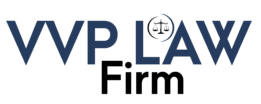Financial exploitation, as well as the intentional infliction of physical, sexual, emotional, or psychic pain, are all examples of abuse. Neglect occurs when a caretaker fails to provide a vulnerable elderly person with the food, shelter, healthcare, or protection they need.
Warnings If you notice any of the following indicators of nursing home neglect or abuse, take immediate action and help from a new york nursing home abuse lawyer.
Behaviors Indicating Neglect or Abuse
- A resident’s claim that they are being mistreated or neglected. Do not disregard a grievance. Ask about specifics and check to see if the complaint is supported by the evidence.
- A sudden shift in awareness or behavior, such as showing signals of anxiety, refraining from once-enjoyed activities, or acting withdrawn.
- A rise in agitation when specific nursing home employees or patients are present.
- The refusal of staff personnel to let you visit or spend time alone with residents.
Symptoms of Abuse
Neglect occurs when a nursing home fails to carry out any of its legal or contractual responsibilities to its residents. Among the warning signs of neglect is malnutrition. Lack of food or the inability to absorb the nutrients in food are the two main causes of malnutrition. It can result in physical deterioration, which raises the possibility of falling, as well as infections or other health issues.
- Hydration loss. Dehydration can be brought on by conditions like diarrhea or high fevers, by some drugs like diuretics, or by not drinking enough fluids. Additionally, it could be a sign of malnutrition.
- And bed sores. Bedsores, also known as pressure sores or ulcers, are open wounds brought on by spending extended periods stationary, such as in a wheelchair or bed. If a patient enters a nursing home without bedsores, they shouldn’t develop.
- Diseases. Although untreated open wounds (like bedsores) might become infected, many infections reported in nursing homes are caused as a result of lax cleaning and sanitation practices. Infections left untreated can quickly worsen and result in shock, respiratory arrest, and death.
- Medication mistakes. A number of major medical issues can result from administering medication in the wrong amounts, at the wrong times, or altogether.
- Slipping standards of hygiene. Soiled bedding, a fecal or urine odor, and inadequate clothing are signs that a resident is not getting enough care and might be neglected.
Physical Abuse Warning Signs
Physical abuse is the use of physical force that results in bodily harm, discomfort, or impairment.
- Injuries that are unaccounted for or poorly accounted for, such as internal injuries or bleeding, black eyes, cuts, bruises, welts, sprains, burns, dislocations, as well as broken bones, including skull fractures.
- Physical indications of restriction, such as burns or marks from ropes, and the presence of restraints in the room, such as belts, ropes, straps, etc.
- Damaged hearing aids, spectacles, or other accessories.
Indicators of sexual abuse
Sexual abuse includes any form of non-consensual sexual contact or sexual contact with a person who is unable to consent, including naked photos.
- Bruising on the anus, breasts, or vaginal region.
- Venereal illness or genital infections.
- Bleeding from the vagina or anum.
- Soiled, torn, or bloody undergarments or bedclothes.
Visit website to know more.

